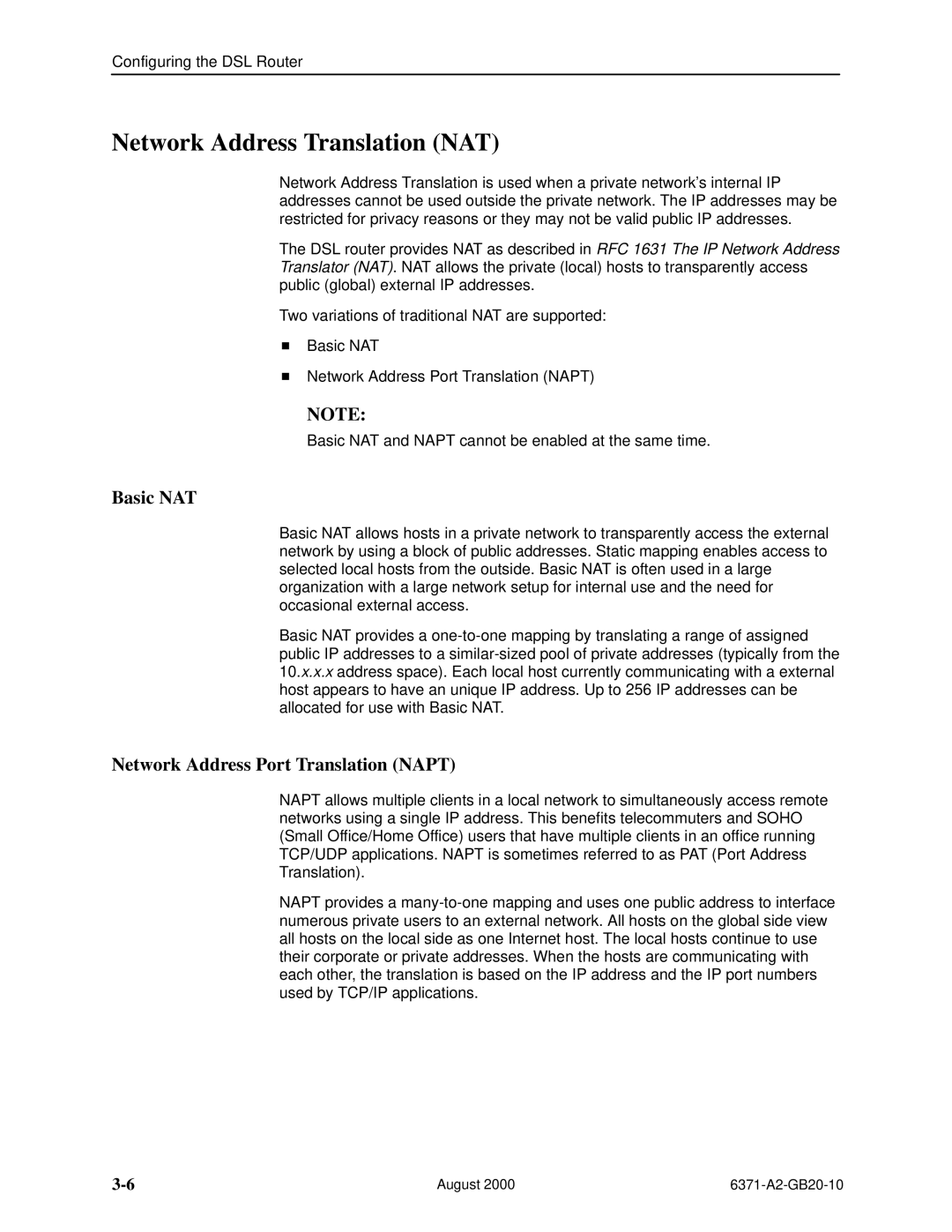Configuring the DSL Router
Network Address Translation (NAT)
Network Address Translation is used when a private network's internal IP addresses cannot be used outside the private network. The IP addresses may be restricted for privacy reasons or they may not be valid public IP addresses.
The DSL router provides NAT as described in RFC 1631 The IP Network Address Translator (NAT). NAT allows the private (local) hosts to transparently access public (global) external IP addresses.
Two variations of traditional NAT are supported:
HBasic NAT
HNetwork Address Port Translation (NAPT)
NOTE:
Basic NAT and NAPT cannot be enabled at the same time.
Basic NAT
Basic NAT allows hosts in a private network to transparently access the external network by using a block of public addresses. Static mapping enables access to selected local hosts from the outside. Basic NAT is often used in a large organization with a large network setup for internal use and the need for occasional external access.
Basic NAT provides a
Network Address Port Translation (NAPT)
NAPT allows multiple clients in a local network to simultaneously access remote networks using a single IP address. This benefits telecommuters and SOHO (Small Office/Home Office) users that have multiple clients in an office running TCP/UDP applications. NAPT is sometimes referred to as PAT (Port Address Translation).
NAPT provides a
August 2000 |
